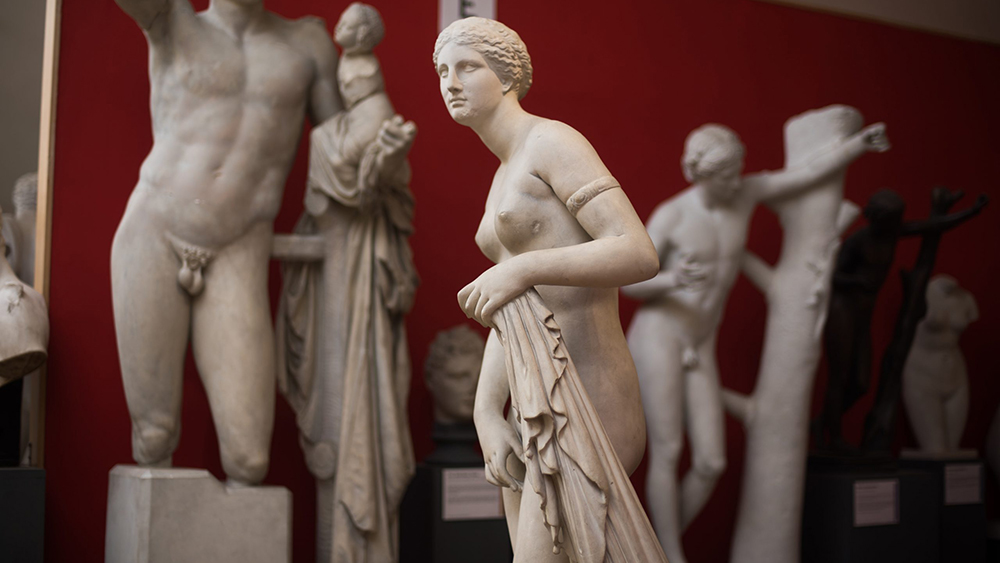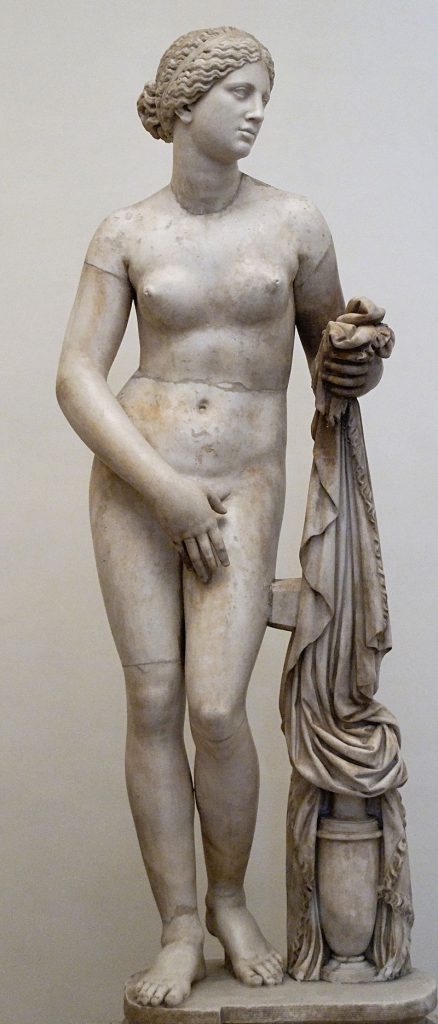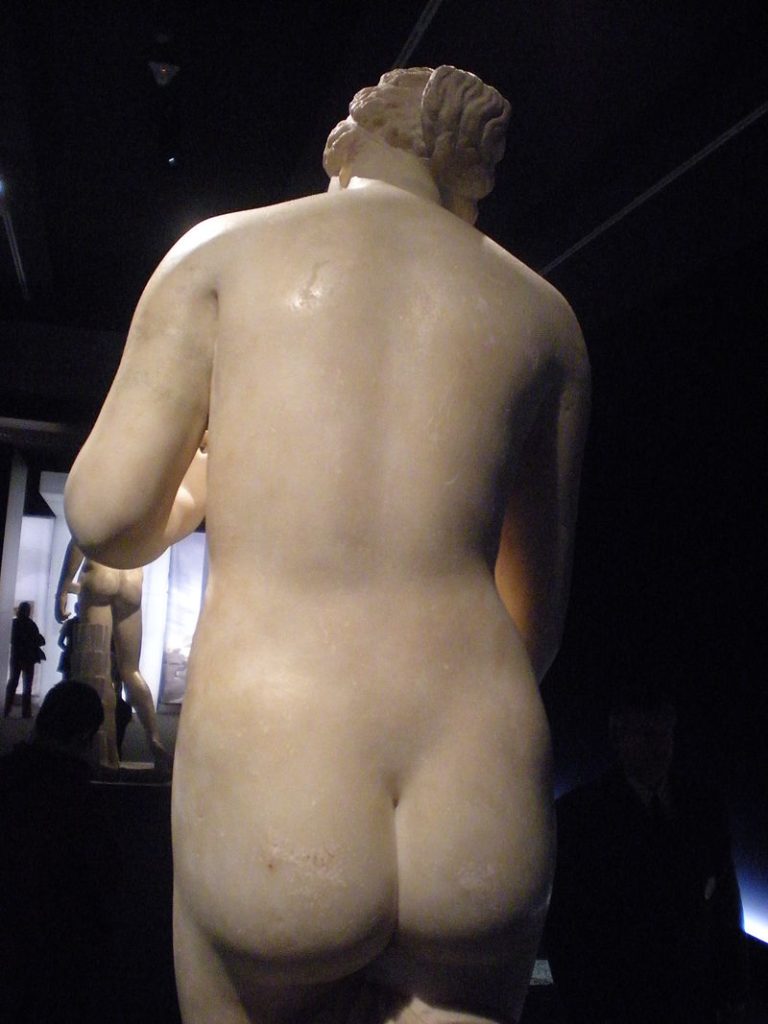The creative background of Aphrodite of Knidos

The Aphrodite of Knidos is a famous work of art. Aphrodite, the goddess of love and beauty in ancient Greek mythology, is one of the most common and important images in Ancient Greek art. In the 4th century BC BC, the sculptor Praxiteles created one of his most representative works – Aphrodite sculpture, which known as the treasure of Ancient Greek art, especially because of its perfect proportion and new design.
The characteristics and artistic value of statue
Aphrodite sculpture is a nude female image. It is a major innovation of Ancient Greek art to take female nudity as the theme of artistic creation for the first time. The posture of this sculpture is natural, with smooth lines and smooth skin, showing the elegance and charm of a goddess. In terms of image creation, Praxiteles depicted the scene where Aphrodite was preparing to bathe, making her image both divine and full of humanity.

Aphrodite sculpture is regarded as a perfect expression of Ancient Greek art. Praxiteles used mathematics and geometric knowledge to deeply study the proportion of the human body, making the proportion of this sculpture accurate and harmonious, reflecting the pursuit of ideal beauty in Ancient Greek art.
The Influence of Aphrodite of Knidos
Aphrodite’s sculpture has a wide and far-reaching influence, not only occupying an important position in Ancient Greek art, but also having a profound impact on later artists. Both Renaissance masters Michelangelo, Leonardo da Vinci, and modern artists repeatedly cite and adapt the image of Aphrodite in their works.
In the history of Western art, Aphrodite statue is a pioneer in idealized depiction of female beauty, opening up a new understanding and shaping of female images in art history.
The Current Situation and Significance of Aphrodite Sculpture

Although the original work has been lost, replicas of Aphrodite of Knidos can be found in museums and private collections around the world, including several versions of Rome and Masolini Aphrodite, which are the most well-known.
This statue is not only an outstanding representative of Ancient Greek art, but also a witness to the eternal pursuit of human aesthetic ideals. She symbolizes love and beauty, is the pursuit and longing of artists for perfection, and is also a source of inspiration for them to constantly innovate and challenge tradition.
Summary
Aphrodite of Knidos is a milestone of Ancient Greek art. Its innovative significance and artistic value still deeply affect the development of world art. She is the goddess of love and beauty, an artist pursuit and expression of ideal beauty, and an eternal symbol of human aesthetic ideals. No matter how many years have passed, Aphrodite’s charm will not fade. She will continue to inspire artists and lead people towards higher and farther artistic realms.

